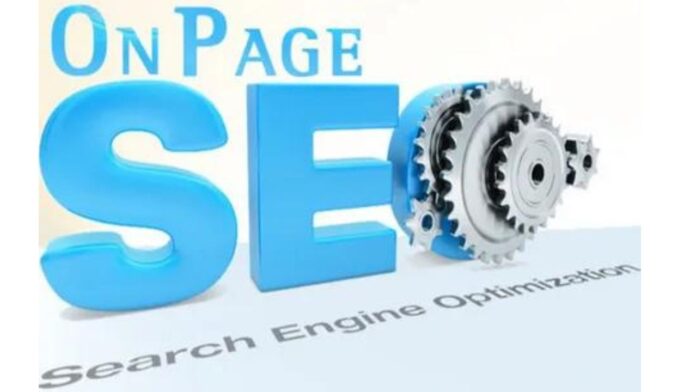The importance of internal linking in On-Page SEO is paramount for a website’s success in the ever-evolving field of SEO. On-page factors are pivotal in determining a website’s position on search engine results pages. Among these factors, internal linking is a fundamental yet often overlooked element that can significantly impact a website’s visibility and user experience.
This comprehensive guide explores the importance of internal linking in on-page SEO. Internal linking is essential because it distributes ranking power and authority among a website’s pages.
When a high-authority page links to another, it passes on some of its authority, benefiting the linked page’s performance and search engine visibility. Implementing effective internal linking strategies is key to enhancing your website’s SEO and overall success.
Why Are Internal Links Important for SEO?
Internal links aid Google’s discovery, indexing, and comprehension of all of the pages on your site. Using them strategically, internal links can send page authority (or PageRank) to important pages.
Internal Linking
Before we dive into the importance of internal linking, it’s crucial to what it is and how it works. Internal linking refers to creating hyperlinks within your Website’s content that connect one page to another inside the same territory.
These connections let visitors explore your Website and provide search engines with valuable details about your Website’s organization and hierarchy. Links are like your Website’s roads and highways, guiding users and search engines to different destinations within your digital realm.
When executed correctly, they can enhance the user experience, distribute link equity, and boost your Website’s SEO performance.
The SEO Benefits of Internal Linking
Internal linking isn’t just a technical aspect of web development; it’s a strategic SEO tool that offers numerous benefits to your Website. Let’s explore some of the key advantages:
Enhanced Website Navigation:
Effective internal linking creates a smooth and user-friendly navigation experience. By strategically placing links to relevant content within your Website, you can guide visitors to explore more of your site’s offerings.
This improves the user experience, keeps users engaged, and encourages them to spend more time on your Website.
Improved Indexing and Crawling
Search engine bots use internal links to discover and crawl new pages on your Website.
When you link from one page to another, you’re essentially saying, “Hey, search engines, this page is important and related to the one you’re currently crawling.” Search engines will better index your material as a result. Efficiently and ensures that all your valuable pages are considered for ranking.
Distributing Link Equity
Link equity, or link juice, is Through hyperlinks, value, and authority are transferred from one page to another.
By strategically placing internal links, you can distribute this link equity throughout your Website, boosting the ranking potential of all your pages. This ensures that your most important pages receive the attention they deserve and helps improve the overall SEO performance of your site.
Establishing Content Hierarchy
Internal linking helps establish a clear hierarchy of content on your Website. By linking from higher-level pages to more specific or niche pages, you communicate to search engines which content is most important and relevant. This hierarchical structure aids in ranking the most valuable pages higher in SERPs.
Decreasing Jump Rate
A high bounce rate can harm your Website’s performance. SEO efforts. When visitors land on a page and leave without exploring other parts of your site, it signals to search engines that your content might need to be more relevant and engaging. Internal links encourage users to stay on your site longer, reducing bounce rates and sending positive signals to search engines.
Best Practices for Effective Internal Linking
Knowing the significance of internal communication linking, it’s time to explore best practices to make the most of this SEO strategy:
Use Descriptive Anchor Text
A hyperlink’s clickable text is known as anchor text. It’s essential to use descriptive and relevant anchor text that gives users and search engines a clear idea of where the link will take them. Instead of generic phrases like “click here” or “read more,” use keywords describing the linked content.
Prioritize Relevance
Internal links should connect related content. When linking from one page to another, Ensure the information on the linked pages is accurate. Thematically related. This enhances the user experience and provides context to search engines, helping them the content’s relevance.
Maintain a Natural Flow
Avoid stuffing your content with excessive internal links. Instead, focus on creating a natural and user-centric flow. Ask yourself if a link adds value to the user’s experience and whether it fits naturally within the content context.
Utilize Site-Wide Navigation Menus
In addition to in-content links, incorporate site-wide navigation menus highlighting important pages on your Website. This ensures that critical pages receive consistent attention from users and search engines.
Update and Audit Regularly
Your SEO strategy should change and grow with your Website. Internal linking strategy. Regularly audit your site for broken links, outdated content, and opportunities to add new internal links. Keeping your internal linking strategy up-to-date is crucial for maintaining strong on-page SEO.
Tools to Assist in Internal Linking

Several tools can help you improve your internal linking strategy:
Yoast SEO
If WordPress is used to power your Website, the Yoast SEO plugin offers an internal linking feature that suggests relevant articles as you write new content. It provides a convenient way to discover opportunities for internal linking.
Screaming Frog SEO Spider
Screaming Frog’s SEO Spider is a powerful crawling tool that can help you visualize your Website’s internal linking structure. It provides insights into how pages are connected, making it easier to identify areas for improvement.
Google Search Console
Google Search Console provides valuable data about how search engines view your Website, including information about internal links. It can help you track the performance of your internal linking strategy and identify any issues that need attention.
Get Yoast SEO Premium:
Yoast SEO Premium is a powerful plugin that enhances your Website’s search engine optimization capabilities. It offers advanced features beyond the free version, helping you achieve better rankings and visibility in search results.
Table of Contents:
One helpful feature is a table of contents. in longer articles or documents. It provides readers with an organized overview of the content, making it easier to navigate and find specific information.
What are internal links?
Internal links are hyperlinks within a website that connect one page or post to another. They are essential for SEO, improving user experience, website structure, and search engine visibility.
Setting up an internal linking strategy:
Developing a well-thought-out internal linking strategy involves:
- Creating a logical hierarchy for your Website.
- Determining the most relevant pages to link.
- Using effective anchor text to improve user engagement and SEO performance.
More on internal links:
This section delves deeper into internal linking, exploring its benefits, best practices, and common mistakes to avoid for a successful SEO strategy.
Internal linking in Yoast SEO:
Yoast SEO, a popular SEO plugin, offers features that simplify and enhance internal linking on your Website. Learn how to use it effectively to optimize your content and improve your site’s SEO.
Easy internal linking with Yoast SEO Premium:
Yoast SEO Premium takes internal linking to the next level, making it easy to implement within your content. Discover how this premium version can streamline interlinking your web pages.
Link your content:
This section likely encourages readers to take immediate action and implement internal links on their Website. It may provide tips and guidelines on how to get started with internal linking.
Coming up next:
This section could preview what readers might anticipate in the following parts of the article or the next steps in their SEO journey.
Get free SEO tips straight to your inbox:
Subscribing to receive free SEO tips via email is an excellent way to stay updated on the latest industry trends and strategies. This section might explain how readers can sign up for these valuable tips.
About Cookies:
This section could address the topic of cookies, often related to website privacy policies, data collection, and user consent. It might explain what cookies are and why websites use them.
Please note that these are concise descriptions of each section or keyword, designed to provide an overview without exceeding the word limit.
Conclusion
In the complex world of SEO, every detail matters, and internal linking is no exception. It is the backbone of your Website’s on-page SEO strategy, providing numerous benefits that enhance user experience and search engine visibility.
By implementing best practices and regularly auditing your internal linking strategy, you can harness the full potential of this powerful SEO tool. So, don’t overlook the importance of internal linking—start optimizing your Website’s internal links today and watch your SEO rankings soar.
FAQ:
What is internal linking, and why is it important for SEO?
Internal linking is the practice of including hyperlinks that connect different pages within your Website. It is important for SEO because it helps search engines your Website’s structure, enhances user experience, and distributes authority and relevance throughout your content, boosting your site’s visibility in search results.
How can internal linking improve my Website’s user experience?
Users can traverse your Website more easily with internal connections. Website by providing relevant and related material. Consequently, this keeps users on your Website for longer. Low bounce rates raise the likelihood of converting them into customers or loyal readers.
What’s the best way to implement internal linking on my Website?
To implement internal linking effectively, ensure that your links are relevant to the content they are placed in, use descriptive anchor text, and refrain from placing an excessive number of links on one page. Create a logical hierarchy within your Website and strategically interlink related articles, pages, or product listings.
Can internal linking help improve my site’s SEO ranking?
Yes, internal linking plays a crucial role in SEO. It helps distribute authority and relevance from high-ranking pages to others, which can lead to improved rankings in search engine results. And refrain from placing an excessive number of links on one page. Site’s SEO performance.
What are some common mistakes to avoid when implementing internal links?
Common mistakes include:
- Using generic anchor text (e.g., “click here”).
- Using too many links on a single page.
- Over-optimizing by using the same anchor text excessively.
Also, avoid linking to irrelevant content, as this can confuse users and search engines.



